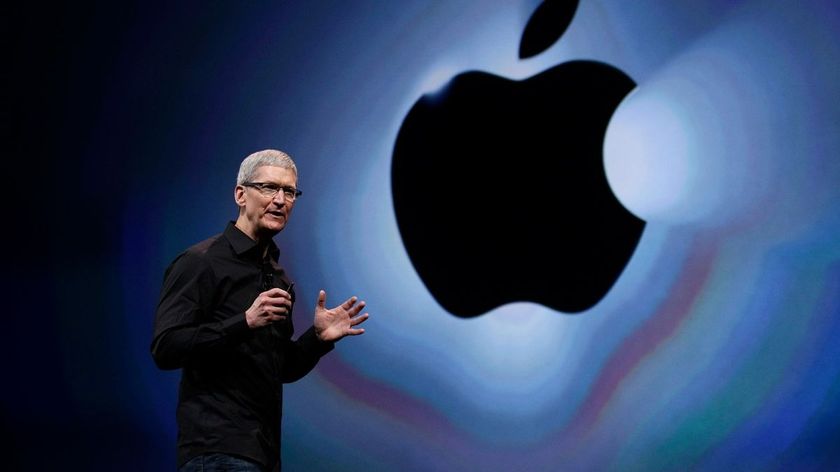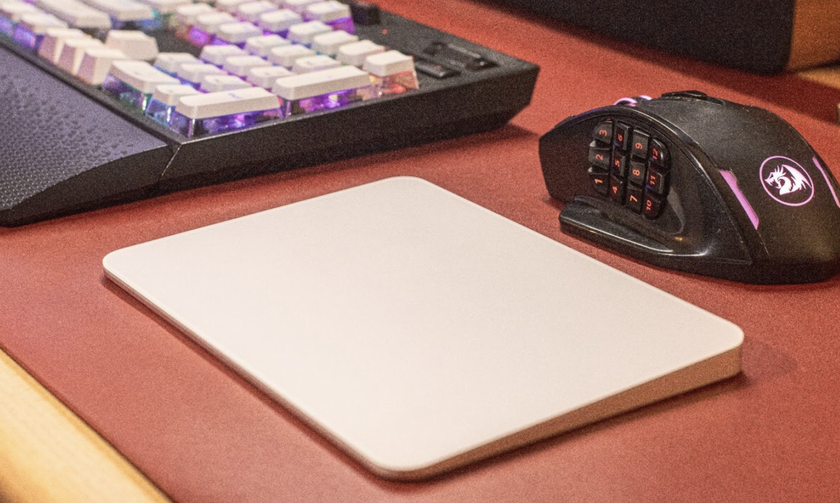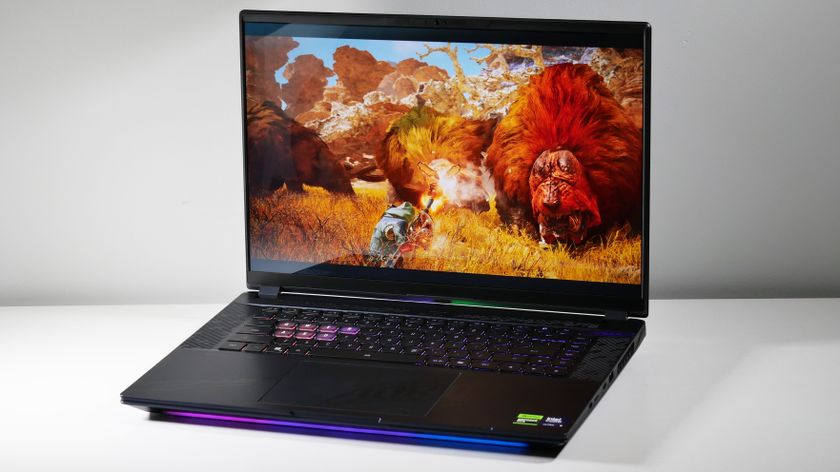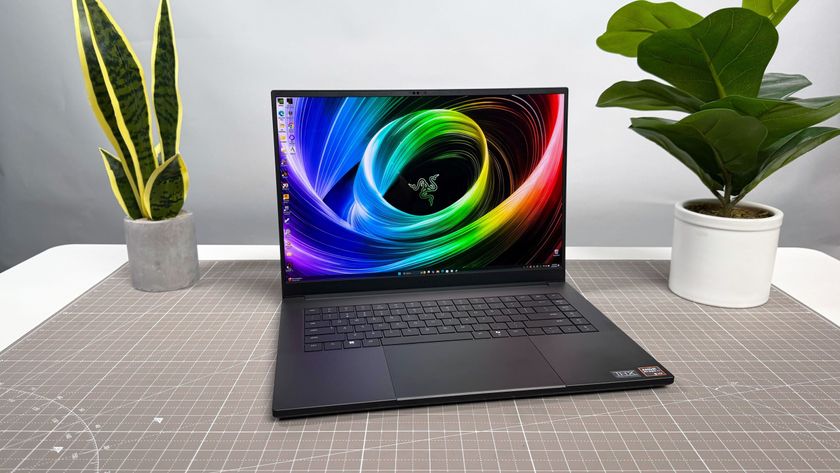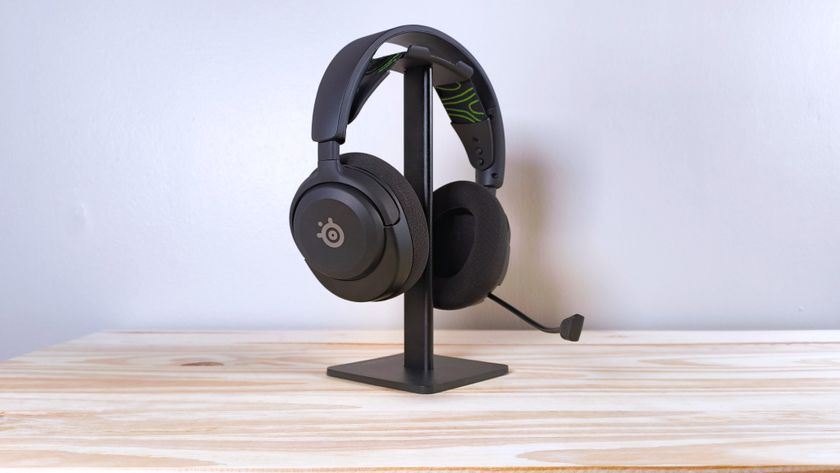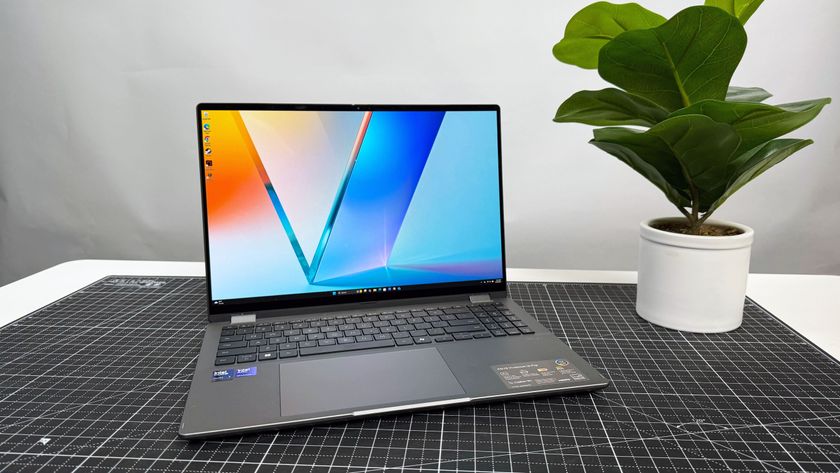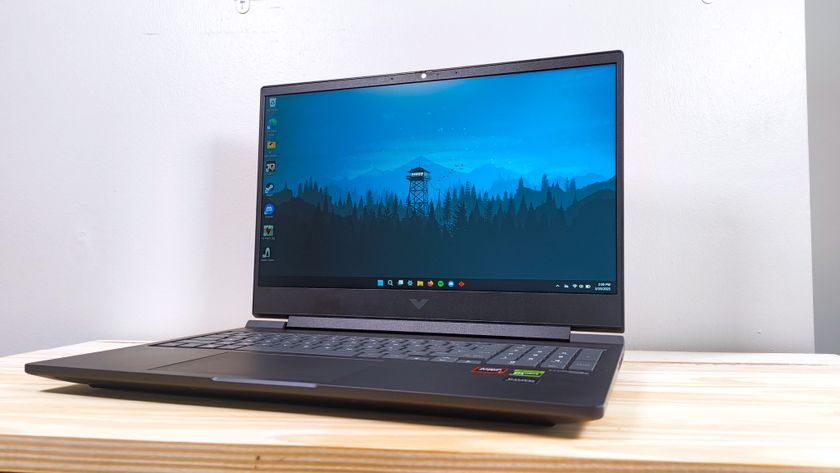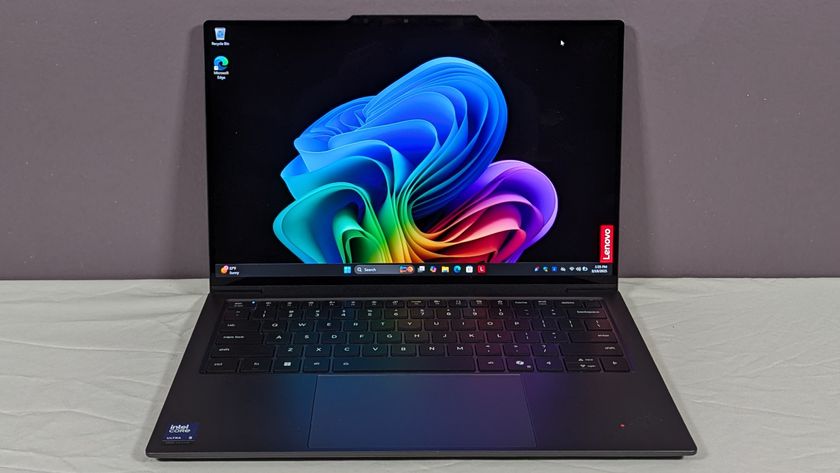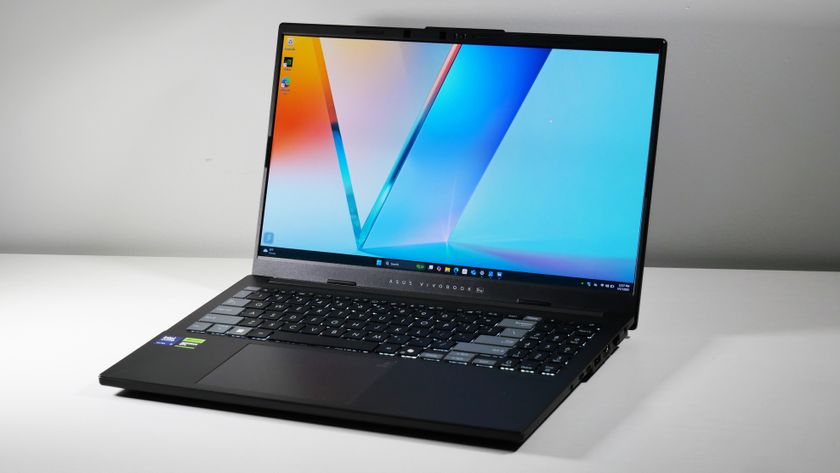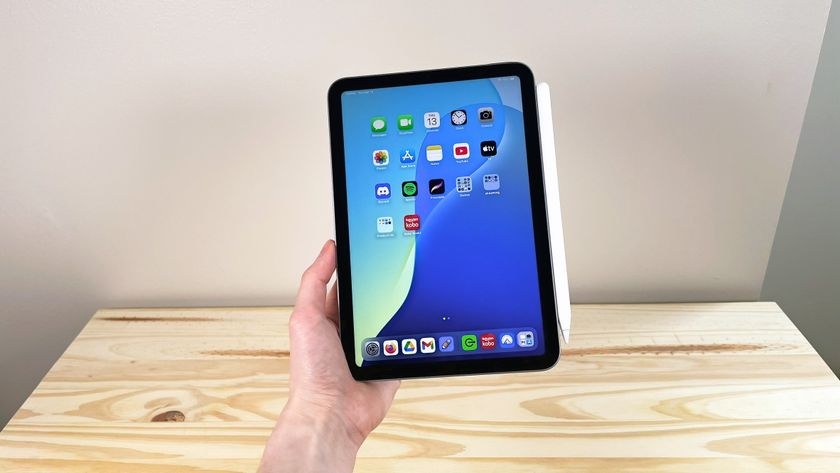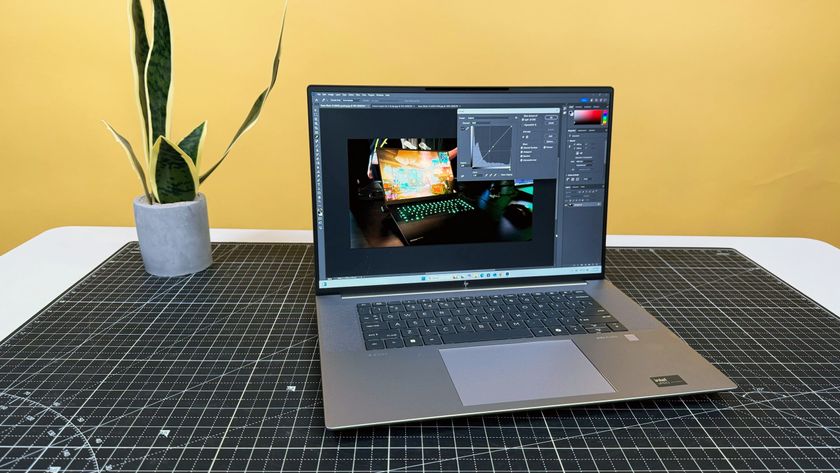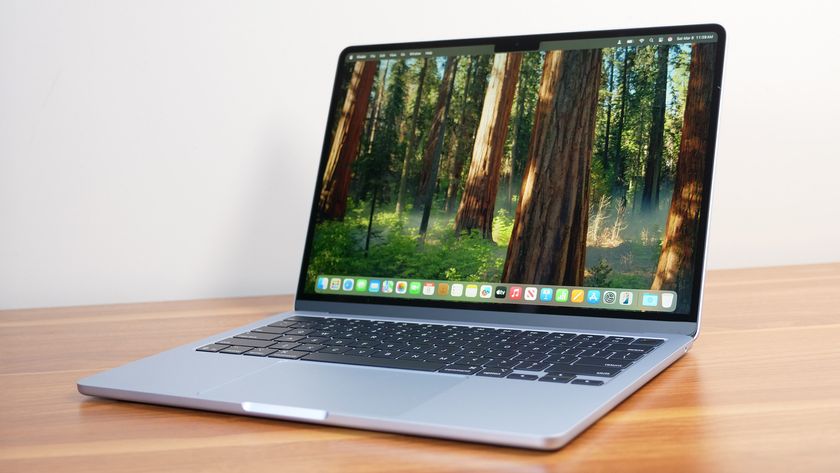Laptop Mag Verdict
Integrated mobile broadband makes Apple's excellent tablet much more useful on the go, but the additional expense doesn't make sense for everyone.
Pros
- +
Sleek design
- +
Intuitive and fun multitouch interface
- +
Good download speeds
- +
Affordable data plan
- +
Long battery life
Cons
- -
Slow upload speeds
- -
Some video apps degrade quality over 3G
- -
Costs $130 more than Wi-Fi only model
- -
VoIP apps don't work over 3G
Why you can trust Laptop Mag
Using Apple's sleek and powerful tablet without an Internet connection on the go makes it almost feel like a doorstop. Sure, you can watch downloaded iTunes movies and TV shows, read iBooks, and play games. But you can't surf the web or check e-mail. And you can't download or use a lot of apps, including ones that let you stream video or update your Twitter feed. So why not just fork over the extra $130 for the iPad Wi-Fi + 3G (starting at $629 for 16GB, plus $30 per month for unlimited data)?
Well, for starters, not everyone will use the iPad outside of the house all that often, especially those who already own an iPhone 3GS or other smart phone. Plus, there are other ways to connect a Wi-Fi-only iPad to the cloud, including devices like the MiFi and mobile hotspot apps bundled with an increasing number of phones. So the decision really comes down to whether the added convenience of integrated 3G is a good value relative to the alternatives and how well it performs. That's what you're about to find out.
Editors' Note:This review focuses on what makes the iPad Wi-Fi + 3G different than the Wi-Fi-only model. Check out the original iPad review for our take on the interface, e-mail, web browsing, photos, and more.
Design
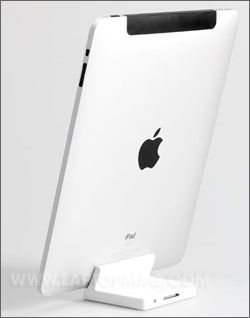
Click to enlargeFrom the front you can barely tell the difference between an iPad with just Wi-Fi and one with 3G. There's just a narrow black plastic strip where the 3G radio is located, presumably to enhance reception. This device has the same razor-thin profile (0.5 inches) as the original model, and it's only a tenth of an ounce heavier at 1.6 pounds. Otherwise, this iPad sports the same elegant aluminum back and bright and crisp 9.7-inch multitouch display. b
Since the iPad Wi-Fi + 3G is designed to be used outside of the home and office, we decided to carry it around New York City and on our daily bus ride to and from central New Jersey (a little over an hour). When just heading outside for lunch we found lugging the iPad to be a bit awkward, even though it was inside a snug case. When paying for our meal, for example, we tucked the tablet under our arm--as we would a newspaper--so we could use both hands. Some will want to spring for a dedicated carrying case that you can sling over your shoulder.
When we sat down to catch up on the latest news online, we had to bump up the display's brightness all the way to make out text. Watching video using the ABC Player app was more of a challenge because of the black background, which resulted in more reflections. As we've said before, reading iBooks on the iPad outdoors is possible but not pleasurable due to the same issues. Bottom line: the iPad Wi-Fi + 3G is easier to tote and start using anywhere than a netbook,but if you constantly have a smart phone in tow it may seem like overkill.
3G Performance
With the iPad Wi-Fi + 3G you can expect brisk downloads and sluggish uploads. We saw a good average download speed of 1.1 Mbps, but only 163 Kbps on the uplink. When you look at top speeds, this tablet holds its own against 3G netbooks. For example, Verizon's Gateway LT2016u maxed out at 1.7 Mbps down and 700 Kbps up, versus 1.9 Mbps and 346 Kbps for the iPad. That's also better than the Nokia Booklet 3G on AT&T (1.2 Mbps/360 Kbps max), but not as speedy as the T-Mobile Dell Inspiron Mini 10 (3.6 Mbps/1.2 Mbps), which benefits from T-Mobile's faster HSPA 7.2 network.

Click to enlarge
Apple's slate also beats the iPhone 3GS when it comes to data speeds. In two separate locations where we ran the Speetest.net app at the same time on both devices, the iPad averaged 843 Kbps downloads versus 554 Kbps for Apple's smart phone. When downloading web pages, the iPad was generally a few seconds faster. For example, in the same locations at the same time the iPad downloaded NYTimes.com in 15 seconds and Laptopmag.com in 24 seconds. It took the iPhone 3GS 17 seconds and 28 seconds, respectively.
Overall, the iPad's 3G connection was fairly speedy and reliable, with most sites and articles loading within 15 to 25 seconds. We also downloaded a 2.5MB e-mail attachment in a quick 16 seconds and the latest 50 messages in 10 seconds. However, we did encounter lengthy delays on a few occasions, especially when the iPad either couldn't lock onto a signal or switched from 3G to EDGE.
There are other limitations iPad Wi-Fi + 3G buyers should be aware of. Like the iPhone, you can't download any app or other iTunes content that's over 20MB if you're using the 3G connection. You can also forget about downloading a TV show or movie in the background (not that we'd want to do that over 3G). More important, most video apps downgrade the quality of their streams, though some do so more severely than others. The Iron Man 2 trailer on YouTube looked like a mess of pixels.

Click to enlarge
On the other hand, an episode of Modern Family using the ABC Player app was surprisingly smooth and mostly clear. Lastly, VoIP apps like Skype don't work over 3G, though that may change.

Click to enlarge
As expected, Pandora played without a hitch, but we wonder how this and other background apps will affect surfing speeds once Apple rolls out its multitasking-friendly iPhone OS 4 this fall.
Maps
The 3G-less iPad has geo-location capabilities, but they're not nearly as accurate because it relies on Wi-Fi triangulation. The iPad Wi-Fi + 3G has the same GPS capabilities as the iPhone 3GS. Actually, it's better. On the New Jersey Turnpike, the iPhone was slightly behind our actual location while the iPad's blue dot was in lock step with our position.
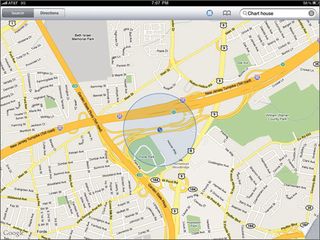
Click to enlarge
As with the iPhone, tapping on the cross-hair icon activates the compass, and you'll see a little headlight graphic radiating from the dot so you know which direction you're going in. We haven't seen any good car mounting solutions yet for the iPad, but dedicated GPS navigation apps are starting to trickle out for those who want to make the most of the mammoth 9.7-inch display. For instance, ALK's CoPilot Live HD North America costs $30.
Battery Life
Apple claims that the iPad can surf the web over 3G for up to 9 hours, and our results didn't fall too short of that. When running the LAPTOP Battery Test (continuous web surfing on 40 percent brightness), the device lasted a very good 8 hours and 21 minutes. That's more than enough time to get through a full work day. The Wi-Fi-only iPad lasted 9 hours and 28 minutes, so you're only losing about an hour of endurance. 3G-enabled netbooks usually last significantly less when using that radio versus Wi-Fi, which is a credit to the iPad's efficient A4 chip and the fact that this device is powered by a mobile operating system and not a desktop OS.

Click to enlarge
Value
Although you can purchase a 250MB data plan for the iPad for just $14.99 per month, we don't recommend it; you'll blow past that limit in no time. The better value is the truly unlimited $29.99 plan--that's right, there's no 5GB cap. This is half of what AT&T and Verizon charge for their 3G netbooks, and $10 less than T-Mobile's 5GB plan. Plus, unlike subsidized netbooks, you can cancel service at any time because there's no contract.
The catch is that you're not getting a deal on the hardware; you're paying a $130 more than the Wi-Fi-only iPad, whether it's for the 16GB ($629), 32GB ($729), or 64GB ($829) version. Subsidized 3G netbooks typically costs $199 on a two-year contract.
However, over two years, a T-Mobile Dell Mini 10 would cost you $1,159, and a Verizon Wireless HP Mini 311 $1,639, versus $1,349 for a 16GB iPad Wi-Fi + 3G. That makes the iPad a pretty good deal, but not a steal. After three years, the three above totals rise to $1,639, $2,359, and $1,709, respectively, so over time the iPad looks like a better bargain.
Also keep in mind that the iPad wakes up instantly and boots in 30 seconds, while 3G netbooks can take 50 seconds to resume from sleep and be ready to connect. They tend to take a minute to boot alone. And unlike netbooks, you don't need to bother with separate connection manager software; the iPad just knows to get online when you fire up the browser, open the Mail app, etc. On the other hand, netbooks have much better keyboards, support Flash, and include integrated webcams.
iPad Wi-Fi + 3G vs. Mobile HotSpots

Click to enlarge
As we mentioned above, integrated mobile broadband isn't the only way to get online with your iPad when you're outside of Wi-Fi hotspot range. Devices like the MiFi (available from Sprint for free on contract and $50 from Verizon Wireless) and Sprint Overdrive (pictured, $99) can connect up to five Wi-Fi devices, though the cost of service is $59 per month. We especially like the MiFi because of its smaller profile, although the Overdrive offers faster speeds where 4G coverage is available. And because the iPad sees mobile hotspots as a Wi-Fi connection, you won't be saddled with the 3G model's limitations, such as the 20MB iTunes download cap, degraded streaming video quality, and the fact that some apps simply don't work (like Skype).
On paper, mobile hotspot devices seem like a better deal than a 3G iPad, but there are significant drawbacks. They don't last very long on a charge (2 to 3 hours), and they take longer to connect than the iPad Wi-Fi + 3G. Plus, with the MiFi there's no way to tell your signal strength; the Overdrive has a tiny LCD that displays this info. An iPad + MiFi combo is more economical and much less restrictive, especially for those who want to use a single device to connect a laptop and iPad, but it's not terribly convenient.
So what about mobile hotspot apps? These turn smart phones like the Verizon Wireless Palm Pre Plus and upcoming Sprint HTC Evo 4G into pocket-size routers. In the case of the Pre Plus, the Mobile Hotspot feature is free with your data plan, making this device a tempting Wi-Fi-only iPad companion. However, this particular phone's relatively short battery life means you'll be keeping an eye on that meter when connected. It's not yet known how much Sprint will charge for the Evo 4G's mobile hotspot feature, but we presume that device's larger battery will last longer. Plus, the Evo 4G can connect up to eight devices at once, three more than the Pre Plus, and will offer faster speeds in 4G coverage areas.
Verdict
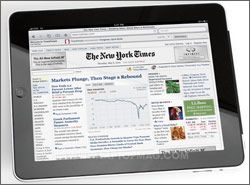
Click to enlarge
There's no question that having 3G inside the iPad makes it a more compelling device. You can surf the web, stream video (albeit at lesser quality), and download apps while mobile. We also think an iPad with integrated mobile broadband is simply more convenient than having to schlep a separate mobile hotspot, which costs twice as much per month for data. On the other hand, $30 per month isn't exactly cheap when you're likely already paying the same amount for your smart phone's data plan, and AT&T's upload speeds are slower than other networks'. We say the iPad Wi-Fi + 3G is worth the extra $130 and monthly fee only if you plan to use the device outside of the house often. And over time we think more people will do that as new cases roll out with integrated Bluetooth keyboards and Apple releases iPhone OS 4 with multitasking. At that point, the iPad will be more like a mini laptop replacement than a media consumption device.
Apple iPad 3G Specs
| Brand | Apple |
| CPU | 1-GHz Apple A4 |
| Display Resolution | 1024x768 |
| Display Size | 9.7 |
| Has Bluetooth | Yes |
| Ports | Headphone |
| Size | 9.6 x 7.5 x 1.5 inches |
| Storage Drive Size | 64GB |
| Storage Drive Type | Flash Memory |
| Weight | 1.6 pounds |
| Wi-Fi | 802.11a/b/g/n |


